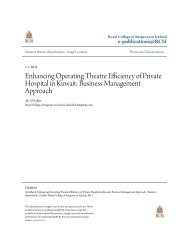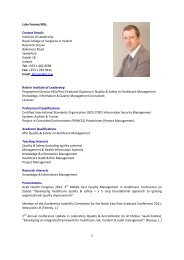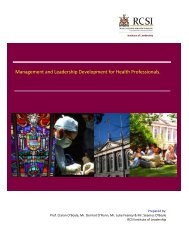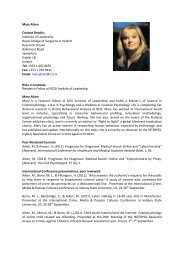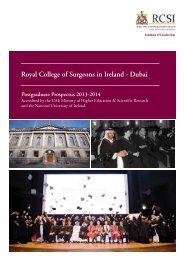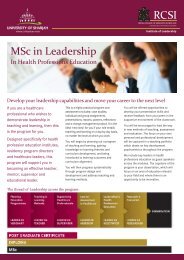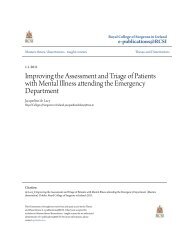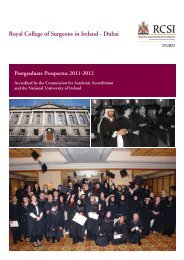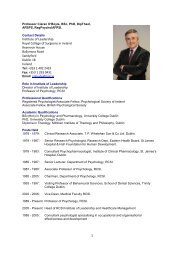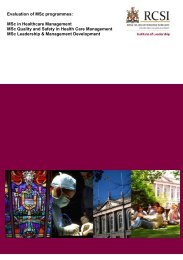Implementation of Safe Surgery Saves Lives initiative in Ahmed ...
Implementation of Safe Surgery Saves Lives initiative in Ahmed ...
Implementation of Safe Surgery Saves Lives initiative in Ahmed ...
- No tags were found...
Create successful ePaper yourself
Turn your PDF publications into a flip-book with our unique Google optimized e-Paper software.
Chapter 1Introduction1.1 IntroductionThe <strong>in</strong>creas<strong>in</strong>g <strong>of</strong> healthcare services complexity over the past decade and <strong>in</strong>creas<strong>in</strong>g <strong>of</strong> coveragehas led to a correspond<strong>in</strong>g rise <strong>in</strong> the number <strong>of</strong> reported adverse events, def<strong>in</strong>ed as un<strong>in</strong>tended<strong>in</strong>juries caused by medical error rather than the disease process itself (Michel, Quenon, deSarasqueta, & Scemama, 2004). Good documentation and report<strong>in</strong>g systems also helped <strong>in</strong>identify<strong>in</strong>g the size <strong>of</strong> problem, such as <strong>in</strong> the famous report <strong>of</strong> the US Institute <strong>of</strong> Medic<strong>in</strong>enamed „„To Err is Human: Build<strong>in</strong>g a <strong>Safe</strong>r Health System,‟‟ (IOM, 2000). The huge size <strong>of</strong>reported medical errors led to establishment <strong>of</strong> patient safety <strong><strong>in</strong>itiative</strong>, and formation <strong>of</strong> WorldAlliance for Patient <strong>Safe</strong>ty. It was identified as a one <strong>of</strong> the key tasks fac<strong>in</strong>g healthcare at thestart <strong>of</strong> the 21st century. This <strong>Safe</strong>ty concept implementation has succeeded <strong>in</strong> ensur<strong>in</strong>g safety <strong>in</strong>aviation <strong>in</strong>dustry a long before (Donaldson, L J, 2007). By focus<strong>in</strong>g attention on this as a publichealth issue, World Alliance for Patient <strong>Safe</strong>ty was recognized the importance <strong>of</strong> improv<strong>in</strong>g thesafety <strong>of</strong> surgery as the second global patient safety challenge (WHO, 2008).1.2 Rationale for carry<strong>in</strong>g out the changeMedical errors and <strong>in</strong>cidence <strong>of</strong> traumatic <strong>in</strong>juries <strong>in</strong> surgical care services were recognized as aproportion <strong>of</strong> the total global burden <strong>of</strong> disease. Surgical care and procedures can potentiallyaffect the lives <strong>of</strong> millions <strong>of</strong> people worldwide. Studies done by WHO found that wrong person,wrong procedure, and wrong site surgery is a preventable adverse event, and def<strong>in</strong>ed a core set <strong>of</strong>m<strong>in</strong>imum standards that can be applied universally across borders and sett<strong>in</strong>gs, and developed aSurgical <strong>Safe</strong>ty Checklist as a tool to ensure safety culture, teamwork, communications,<strong>in</strong>formation hand<strong>of</strong>f, patient <strong>in</strong>volvement, and check <strong>of</strong> processes. WHO Alliance for Patient<strong>Safe</strong>ty promote apply<strong>in</strong>g those standards through the ““<strong>Safe</strong> <strong>Surgery</strong> <strong>Saves</strong> <strong>Lives</strong>”” program8




